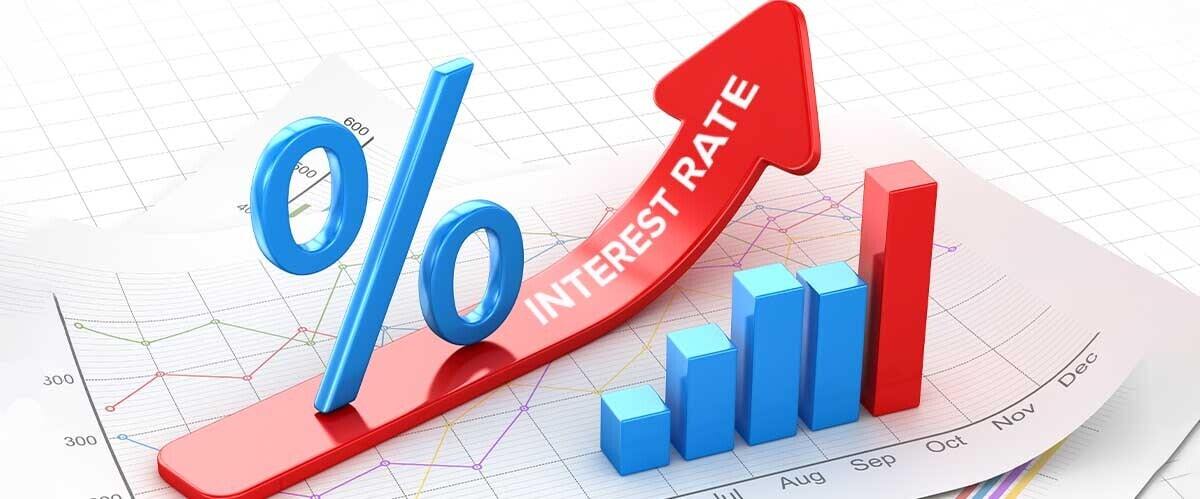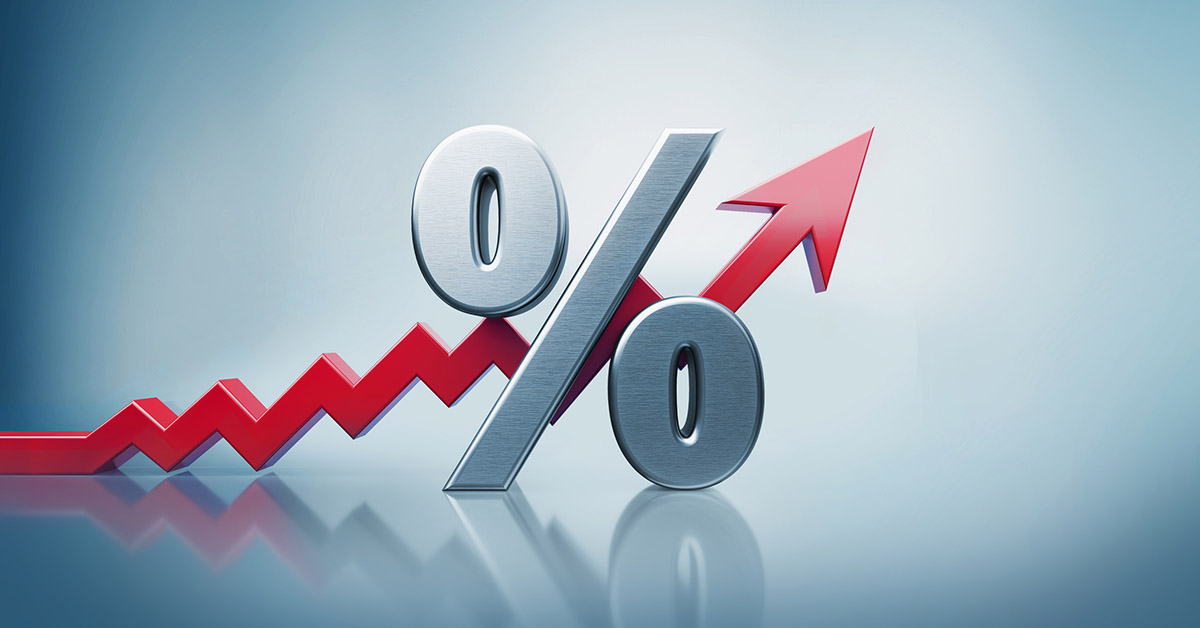Introduction
Interest rates play a crucial role in the functioning of lending and borrowing markets. They determine the cost of borrowing money and influence economic activities at both individual and macroeconomic levels. But have you ever wondered how these specific interest rates for lending and borrowing markets are determined? In this article, we will explore the factors that contribute to the establishment of interest rates in various market segments.
The setting of interest rates involves a complex interplay of multiple factors, including the actions of central banks, supply and demand dynamics, credit risk assessment, market sentiment, and government policies. Understanding these factors is essential for businesses, consumers, and investors, as interest rates directly impact the affordability of credit, consumption patterns, investment decisions, and overall economic growth.
Central banks play a crucial role in determining interest rates. These financial institutions are responsible for maintaining price stability and promoting economic growth. They use monetary policy tools, such as open market operations and reserve requirements, to manage the money supply and influence interest rates. By adjusting these tools, central banks aim to control inflation and stimulate or cool down the economy.
Supply and demand dynamics also contribute to the determination of interest rates. In lending markets, the supply of credit from financial institutions and the demand from businesses and individuals seeking loans affect the prevailing interest rates. When the supply of credit is high, and the demand is low, interest rates tend to be lower, promoting borrowing and investment. Conversely, when the demand for credit exceeds the supply, interest rates tend to rise.
The Role of Central Banks
Central banks play a crucial role in the determination of interest rates in lending and borrowing markets. These institutions, typically governed by policymakers, have the responsibility of maintaining price stability and promoting economic growth. They achieve this by utilizing various monetary policy tools and mechanisms.
One of the primary tools used by central banks to influence interest rates is open market operations. Through this process, central banks buy or sell government securities in the open market, effectively injecting or withdrawing liquidity from the financial system. When central banks purchase securities, they increase the money supply, which leads to lower interest rates. Conversely, when central banks sell securities, they reduce the money supply, causing interest rates to rise.
Another tool utilized by central banks is the adjustment of reserve requirements. Banks are required to hold a certain percentage of their deposits as reserves, which limits the amount of money available for lending. By increasing or decreasing reserve requirements, central banks can impact the amount of credit available in the economy, subsequently affecting interest rates. Lowering reserve requirements increases the loanable funds, leading to lower interest rates, while raising reserve requirements has the opposite effect.
Central banks also set a benchmark interest rate, known as the policy rate, which serves as a guide for other market interest rates. This rate is typically adjusted by the central bank’s monetary policy committee to control inflation and promote economic stability. Changes in the policy rate directly influence short-term interest rates, such as interbank lending rates and short-term government bond yields.
Furthermore, central banks communicate their monetary policy stance through policy statements and press conferences. These communications provide guidance to market participants and help shape market expectations. For example, if a central bank signals a potential increase in interest rates due to inflationary pressures, market participants may anticipate higher borrowing costs and adjust their investment strategies accordingly.
Supply and Demand Factors
Supply and demand dynamics play a significant role in the determination of interest rates in lending and borrowing markets. The interaction between the supply of credit from financial institutions and the demand from businesses and individuals seeking loans helps establish the prevailing interest rates.
When the supply of credit is abundant, financial institutions are willing and able to lend to borrowers. This surplus of available funds creates competition among lenders, driving interest rates lower. Lower interest rates encourage borrowing and investment, stimulating economic growth and consumption. Moreover, increased lending may also result in higher money supply, which can further impact interest rates by influencing inflationary pressures.
On the other hand, when the demand for credit outweighs the available supply, interest rates tend to rise. Higher demand for loans signals a strong desire for borrowing, often driven by increased economic activity and investment opportunities. Financial institutions respond to this demand by increasing interest rates to maximize their profitability and manage the risk associated with lending. Higher interest rates can help dampen excess borrowing and prevent overheating of the economy.
Supply and demand factors are influenced by a wide range of economic and market conditions. Economic indicators, such as Gross Domestic Product (GDP) growth, employment rates, and consumer confidence, can impact the demand for credit. During periods of robust economic growth, businesses may seek more loans to fund expansion projects, while consumers may increase their borrowing for purchases such as homes or cars.
Credit risk assessment is another important consideration for lenders. Banks and other financial institutions evaluate the creditworthiness of borrowers to determine interest rates. Factors such as credit scores, income stability, and collateral value all influence the perceived risk of lending. Higher-risk borrowers are likely to face higher interest rates to compensate for the increased risk of default.
Market sentiment and investor expectations also affect interest rates. If investors anticipate that interest rates will rise in the future due to factors like inflation or government policy changes, they may demand higher interest rates on their lending, which can drive rates up in the market.
In summary, the supply and demand factors in lending and borrowing markets have a significant impact on the determination of interest rates. The interplay between the supply of credit from financial institutions and the demand from borrowers, coupled with economic indicators, credit risk assessment, market sentiment, and investor expectations, all contribute to the fluctuation of interest rates. Understanding these factors is essential for businesses, consumers, and investors to make informed decisions regarding borrowing and investment strategies.
Inflation and Economic Indicators
Inflation is a key factor that influences the determination of interest rates in lending and borrowing markets. Central banks closely monitor inflation levels and adjust interest rates accordingly to maintain price stability and promote sustainable economic growth.
When inflation is high or expected to rise, central banks may increase interest rates to curb excessive borrowing and spending. Higher interest rates act as a deterrent to borrowing and encourage individuals and businesses to save or invest funds instead. By reducing the demand for credit, central banks aim to control inflationary pressures, as excessive borrowing can fuel price increases in the economy.
In contrast, when inflation is low or below the desired target, central banks may lower interest rates to stimulate borrowing and economic activity. Lower interest rates make borrowing more affordable and encourage businesses to invest in expansion and consumers to make large purchases. This increased spending helps stimulate economic growth and can have a positive effect on inflation.
Economic indicators play a crucial role in determining the level of inflation and subsequently influencing interest rates. Indicators such as Gross Domestic Product (GDP) growth, employment rates, and consumer price indices provide insights into the health and performance of the economy.
GDP growth is a measure of the overall economic activity within a country, reflecting the total value of goods and services produced. High GDP growth rates indicate a robust economy, which can lead to increased demand for credit and potential inflationary pressures. Central banks may respond to this by increasing interest rates to moderate borrowing and maintain price stability.
Employment rates are another important economic indicator that impacts inflation and interest rates. When the job market is strong, with low unemployment rates and increased job creation, consumer spending tends to rise. As more people have stable incomes, borrowing and consumption increase, potentially leading to inflationary pressures. In response, central banks may raise interest rates to cool down the economy and manage inflation.
Consumer price indices, which track changes in the prices of goods and services over time, provide valuable data on inflation levels. Central banks closely monitor these indices to assess whether inflation is within the desired target range. If inflation is running too high or too low, central banks may adjust interest rates accordingly to address any imbalances.
Overall, inflation and economic indicators play a vital role in the determination of interest rates. Central banks use interest rate changes as a tool to manage inflation and promote economic stability. By closely monitoring economic indicators, central banks can make informed decisions and adjust interest rates to maintain price stability, foster economic growth, and support financial market conditions.
Credit Risk Assessment
Credit risk assessment is a critical component in the determination of interest rates in lending and borrowing markets. Financial institutions evaluate the creditworthiness of borrowers to determine the level of risk associated with lending, which plays a significant role in determining the interest rates offered.
Lenders assess credit risk by considering various factors, including the borrower’s credit history, income stability, debt-to-income ratio, collateral, and overall financial health. These factors help determine the likelihood of the borrower defaulting on their loan obligations.
A borrower with a strong credit history, demonstrated by a high credit score and a track record of timely payments, is considered less risky by lenders. Such borrowers are likely to be offered lower interest rates as they are viewed as more reliable and less likely to default on their loan obligations.
On the other hand, borrowers with a lower credit score, previous delinquencies, or a higher debt-to-income ratio are seen as higher-risk borrowers. Lenders may charge higher interest rates to compensate for the increased likelihood of default. These higher interest rates reflect the additional risk undertaken by the lender, aiming to mitigate potential losses.
Another consideration in credit risk assessment is the presence of collateral. Collateral is an asset offered by the borrower as security against the loan. If the borrower fails to repay the loan, the lender can seize and sell the collateral to recover their losses. The presence of collateral can help reduce the perceived risk for the lender, leading to potentially lower interest rates.
Lenders also take into account the overall financial health of the borrower, including their income stability and debt burden. Borrowers with a stable income source and a manageable level of existing debt are generally seen as lower risk. Lenders are more likely to offer these borrowers lower interest rates as they are perceived as more capable of meeting their financial obligations.
It’s important to note that credit risk assessment is not solely based on an individual borrower’s profile. Lenders also consider macroeconomic factors, such as overall economic conditions, industry-specific risks, and market trends. These factors can influence the perceived credit risk for borrowers across different sectors.
In summary, credit risk assessment is a crucial factor in determining interest rates in lending and borrowing markets. Financial institutions evaluate borrowers based on their credit history, income stability, debt-to-income ratio, collateral, and overall financial health. Lower-risk borrowers are likely to be offered lower interest rates, while higher-risk borrowers may face higher interest rates to compensate for the increased likelihood of default. Understanding credit risk assessment is essential for borrowers in order to improve their creditworthiness and potentially access more favorable interest rates.
Market Sentiment and Investor Expectations
Market sentiment and investor expectations play a significant role in the determination of interest rates in lending and borrowing markets. The collective beliefs, opinions, and emotions of market participants can influence the supply and demand dynamics of loans, ultimately impacting interest rates.
Investors’ expectations about the future direction of interest rates can have a direct impact on lending markets. If investors anticipate that interest rates will rise in the future, they may demand higher interest rates on their lending. This increased demand for higher rates can affect the overall interest rate environment in the market. Conversely, if investors expect interest rates to decline, they may be more willing to lend at lower rates, putting downward pressure on interest rates.
Market sentiment, which reflects the overall attitude and outlook of investors, can also influence interest rates. Positive market sentiment, characterized by optimism and confidence in the economy, tends to reduce perceived risk and encourage more lending. This increased willingness to lend leads to lower interest rates as lenders compete for borrowers. Conversely, negative market sentiment, driven by concerns about economic instability or uncertainty, can lead to higher interest rates as lenders become more risk-averse.
Market sentiment and investor expectations are influenced by a variety of factors, including economic indicators, news events, global economic trends, and government policies. Economic indicators, such as GDP growth, inflation rates, and employment figures, can shape investor sentiment by providing insights into the health and stability of the economy. Positive indicators can generate optimism and encourage investors to take on more risk, potentially leading to lower interest rates. Negative indicators, on the other hand, may cause concern and result in higher interest rates.
News events, such as geopolitical developments or corporate scandals, can also impact market sentiment. Negative news can create uncertainty and lead to a flight to safety, increasing demand for relatively safer investments and causing interest rates to rise. Positive news, on the other hand, can boost investor confidence and contribute to lower interest rates.
Government policies, particularly those related to monetary and fiscal measures, can significantly influence investor expectations. Changes in interest rate targets by central banks, for example, can shape market sentiment and impact interest rates across the borrowing and lending markets. Additionally, government spending initiatives or changes in taxation policies can have ripple effects on investor sentiment and, ultimately, interest rates.
In summary, market sentiment and investor expectations have a profound influence on the determination of interest rates in lending and borrowing markets. The collective beliefs, opinions, and emotions of market participants drive the supply and demand dynamics of loans, leading to fluctuations in interest rates. Economic indicators, news events, global trends, and government policies all contribute to market sentiment and investor expectations, shaping the overall interest rate environment.
Monetary Policy and Interest Rate Targets
Monetary policy plays a crucial role in the determination of interest rates in lending and borrowing markets. Central banks, as the primary authority for monetary policy, set and adjust interest rate targets to achieve their mandated objectives, such as maintaining price stability and promoting sustainable economic growth.
Central banks typically use a benchmark interest rate, often known as the policy rate or the key interest rate, as a tool to influence borrowing costs throughout the economy. The central bank’s monetary policy committee makes decisions regarding changes to the policy rate based on their assessment of economic conditions, inflationary pressures, and other relevant factors.
When the central bank wants to encourage borrowing and stimulate economic activity, it may lower the policy rate. Lower interest rates reduce the cost of borrowing for businesses and individuals, incentivizing them to take out loans for investment or consumption purposes. This increased borrowing and spending can help boost economic growth and support inflationary pressures within target levels.
In contrast, if the central bank determines that inflation is rising too rapidly or if there are concerns about overheating in the economy, it may increase the policy rate. Higher interest rates make borrowing more expensive, which can help moderate borrowing and spending, curbing inflationary pressures by reducing overall demand in the economy. Additionally, higher interest rates can help attract foreign capital to stabilize currency values in times of economic uncertainty.
The central bank communicates its monetary policy stance through regular announcements, policy statements, and press conferences. These communications provide guidance to market participants, including financial institutions and investors, helping shape expectations about future interest rate decisions.
Market participants closely analyze the communications from central banks for signals of potential changes in interest rates. If the central bank indicates an intention to raise interest rates in the future due to inflationary concerns, market participants may adjust their borrowing and investment strategies accordingly. This anticipation of higher borrowing costs can influence market interest rates even before an official rate increase has been implemented.
It’s worth noting that changes in the policy rate set by the central bank can have a cascading effect on other interest rates in the economy. For instance, short-term interest rates, such as interbank lending rates, tend to closely track the policy rate. Long-term interest rates, such as mortgage rates and bond yields, may also be influenced by changes in the policy rate but can also be influenced by market factors such as supply and demand dynamics and inflation expectations.
In summary, monetary policy and interest rate targets set by central banks have significant implications for interest rates in lending and borrowing markets. Central banks use changes in the policy rate to influence borrowing costs, manage inflationary pressures, and support economic stability. Market participants analyze and react to central bank communication, anticipating potential changes in interest rates, which can impact borrowing and investment strategies.
Interbank Lending Rates
Interbank lending rates play a critical role in the determination of interest rates in lending and borrowing markets. These rates reflect the cost at which banks lend funds to one another on a short-term basis. Interbank lending rates serve as a benchmark for other short-term interest rates and have a significant impact on the overall borrowing costs in the financial system.
The interbank lending market allows banks to borrow and lend funds to maintain their reserve requirements and manage liquidity. Banks with excess funds can lend to banks in need of liquidity. The interest rate at which these transactions occur is known as the interbank lending rate. These rates are influenced by various factors, including the supply and demand for funds among banks and the overall liquidity conditions in the financial system.
The central bank plays a crucial role in influencing interbank lending rates. It can provide liquidity to banks through open market operations, such as repurchase agreements or direct lending. By adjusting the availability and cost of liquidity, the central bank can influence the interbank lending rates. When the central bank injects liquidity into the financial system, it can drive down interbank lending rates, making borrowing between banks more affordable. Conversely, if the central bank tightens liquidity, it can lead to higher interbank lending rates as banks compete for limited funds.
Market sentiment and investor expectations also impact interbank lending rates. If market participants anticipate changes in monetary policy or economic conditions, it can influence their willingness to lend and borrow in the interbank market. Positive sentiment and confidence in the economy can lead to lower interbank lending rates. Conversely, negative sentiment and uncertainty can result in higher rates as lenders become more risk-averse.
Credit risk assessment is another crucial factor in determining interbank lending rates. Banks evaluate the creditworthiness of their counterparties before entering into interbank lending transactions. Banks with stronger credit profiles are likely to receive funds at more favorable rates, reflecting lower perceived risk. Conversely, banks with higher credit risk may face higher interbank lending rates as compensation for the increased risk taken by the lending bank.
Interbank lending rates also serve as a benchmark for other short-term interest rates in the market. For example, variable-rate loans, such as adjustable-rate mortgages or commercial loans, often use interbank lending rates, such as the London Interbank Offered Rate (LIBOR), as a reference rate. Changes in interbank lending rates can, therefore, influence the borrowing costs for businesses and consumers, impacting broader lending and borrowing markets.
In summary, interbank lending rates provide a benchmark for short-term borrowing costs in the financial system. They are influenced by factors such as liquidity conditions, central bank actions, market sentiment, and credit risk assessment. Interbank lending rates serve as a reference rate for other short-term interest rates and play a vital role in determining overall borrowing costs in the lending and borrowing markets.
Government Bonds and Fixed Income Markets
Government bonds and the fixed income market play a significant role in the determination of interest rates in lending and borrowing markets. Government bonds are debt securities issued by governments to finance their spending needs. These bonds serve as a key reference point for interest rates in the broader fixed income market.
The pricing and yields of government bonds are influenced by several factors, including supply and demand dynamics, market sentiment, economic conditions, and credit risk assessment. The interest rate on government bonds, also known as the yield, is a key benchmark used to gauge borrowing costs in the fixed income market.
Government bonds are typically considered low-risk investments due to the strong creditworthiness of governments. Consequently, the yield on government bonds tends to be used as a baseline for pricing other fixed income securities. In general, if the yield on government bonds is high, other fixed income securities will also command higher yields to compensate for the additional risk they carry.
Supply and demand dynamics within the fixed income market can have a significant impact on government bond yields and, consequently, interest rates in lending and borrowing markets. When there is high demand for government bonds, often seen as safe investments, their prices rise, and yields decrease. This decrease in government bond yields can then influence other interest rates, leading to lower borrowing costs for businesses and consumers.
Market sentiment and economic conditions also influence the fixed income market. During periods of economic uncertainty or market volatility, investors tend to seek safe-haven investments, such as government bonds. This increased demand for government bonds drives up their prices and lowers their yields. Lower government bond yields can, in turn, affect other market interest rates.
Credit risk assessment also plays a role in the fixed income market. Although government bonds are generally considered low-risk, there can still be variation in yields between different countries. Investors assess the creditworthiness of governments and the ability to repay their debt obligations. Governments with perceived higher credit risk may have higher yields on their bonds, which can influence other interest rates within the lending and borrowing markets.
Changes in government bond yields can have a ripple effect on other interest rates. For instance, mortgage rates, corporate bond yields, and other forms of borrowing costs may be influenced by changes in government bond yields. Higher government bond yields can lead to higher borrowing costs for businesses and consumers when they seek financing through these channels.
In summary, government bonds and the fixed income market are influential in the determination of interest rates in lending and borrowing markets. Government bond yields serve as a benchmark for other fixed income securities and can impact borrowing costs throughout the economy. Supply and demand dynamics, market sentiment, economic conditions, and credit risk assessment all contribute to the establishment of government bond yields and the subsequent influence on interest rates.
Consumer Lending Rates
Consumer lending rates refer to the interest rates charged on loans extended to individuals for personal use, such as mortgages, auto loans, credit cards, and personal loans. These rates are influenced by a variety of factors, including market conditions, creditworthiness of borrowers, economic indicators, and monetary policy decisions.
Market conditions play a significant role in the determination of consumer lending rates. The supply and demand dynamics within the consumer lending market can impact interest rates. When there is high demand for loans, lenders may increase interest rates to manage the volume of borrowing. Conversely, if there is low demand for loans, lenders may lower interest rates to attract borrowers and stimulate lending.
The creditworthiness and risk profile of individual borrowers also affect consumer lending rates. Lenders assess borrowers’ credit history, income stability, debt levels, and other factors to determine the level of risk associated with lending to them. Borrowers with high credit scores and a strong repayment history are typically offered lower interest rates, reflecting their lower perceived risk of default. On the other hand, borrowers with lower credit scores or a history of delinquencies may face higher interest rates to compensate for the increased risk.
Economic indicators are another important factor in setting consumer lending rates. Indicators such as inflation rates, employment levels, and economic growth can influence interest rates. Higher inflation rates may lead to higher interest rates to mitigate inflationary pressures in the overall economy. Similarly, periods of economic expansion and low unemployment rates may result in lower interest rates to encourage borrowing and stimulate economic activity.
Monetary policy decisions made by central banks also impact consumer lending rates. Central banks adjust benchmark interest rates to manage inflation and promote economic stability. These changes in policy rates filter into the lending market and can directly affect consumer lending rates. When central banks raise interest rates, it can lead to an increase in borrowing costs for individuals, while lowering interest rates can make borrowing more affordable.
The overall cost of funds for lenders, influenced by interbank lending rates and the pricing of wholesale funds, also plays a role in setting consumer lending rates. Lenders may borrow funds on a short-term basis to meet their lending requirements. Changes in interbank lending rates or the cost of wholesale funds can affect the cost of funds for lenders, which can then impact the interest rates charged to consumers.
Competition among lenders is another factor affecting consumer lending rates. Lenders strive to attract borrowers by offering competitive rates. Increased competition can lead to lower interest rates as lenders seek to gain market share. However, lenders still need to maintain profitability, and therefore, the level of competition may not always result in substantial decreases in consumer lending rates.
In summary, consumer lending rates are influenced by market conditions, creditworthiness of borrowers, economic indicators, monetary policy decisions, the overall cost of funds for lenders, and competition among lenders. Understanding these factors is essential for individuals seeking loans, as it enables them to assess their borrowing costs, compare rates, and make informed decisions regarding their personal finances.
Conclusion
The determination of interest rates in lending and borrowing markets is a complex process influenced by various factors. Understanding these factors is crucial for businesses, consumers, and investors as interest rates directly impact borrowing costs, investment decisions, and overall economic growth.
Central banks play a vital role in setting interest rates through their monetary policy decisions, open market operations, and adjustments to reserve requirements. Supply and demand dynamics, inflation levels, economic indicators, and credit risk assessment also play a significant role in determining interest rates in different market segments.
Market sentiment and investor expectations can influence interest rates, as market participants react to changes in economic conditions, government policies, and news events. The interplay of these factors can result in fluctuations in interest rates, impacting borrowing costs and investment strategies.
Government bonds and the fixed income market provide important benchmarks for interest rates. Government bond yields affect borrowing costs in the broader fixed income market, while interbank lending rates serve as a reference point for short-term borrowing costs. Consumer lending rates, on the other hand, are influenced by factors such as market conditions, creditworthiness of borrowers, economic indicators, and monetary policy decisions.
In conclusion, the determinants of interest rates in lending and borrowing markets are multifaceted and interconnected. Understanding the role of central banks, supply and demand dynamics, inflation, credit risk assessment, market sentiment, and government policies is essential in navigating the borrowing and lending landscape. By being aware of these factors, businesses, consumers, and investors can make informed decisions regarding borrowing, investing, and managing their financial well-being.

























